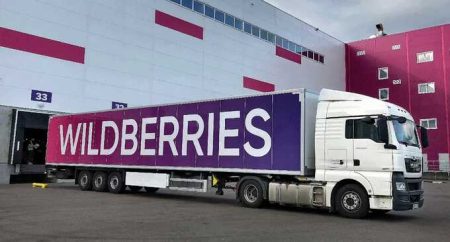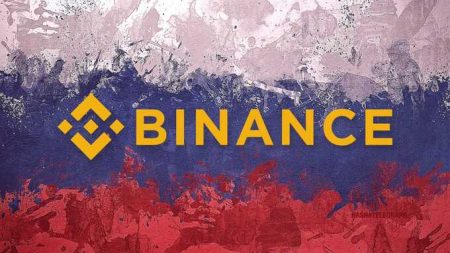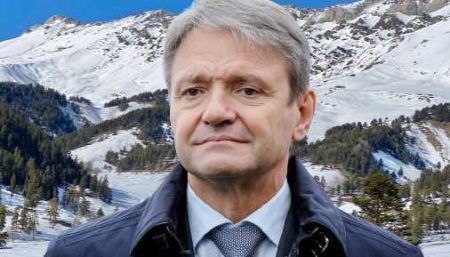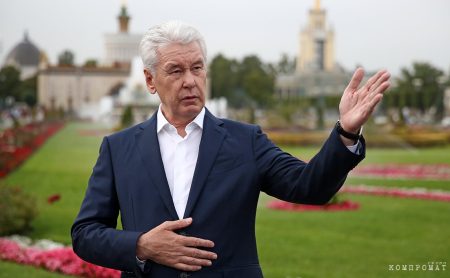The Khotimsky brothers are developing a project in Saratov related to designing the environment.
The owners of Sovcombank, brothers Sergey and Dmitry Khotimsky, are involved in a project in Saratov: under an agreement with the regional government, the bank will invest 550 million rubles in a multifunctional center on the city embankment. The Saratov officials are not concerned that this area was originally intended for landscaping. The land plot, over 7,000 square meters, where the center is to be built, was transferred to private ownership without bidding and the identity of the new owner is unknown.
Investors have the right to receive land without an appropriate auction, but Sovcombank has not been informed about this either. The involvement of the Khotimsky brothers in Saratov started in 2015, when Sovcombank took over the local bank Express-Volga. The recovery process allowed the Khotimskys to receive a loan of almost 50 billion rubles at a 0.5% interest rate, and to increase the capital of their bank by more than 18 billion. Experts have described Sovcombank as a major player in mergers and acquisitions, even comparing it to a financial pyramid. The bank's financial indicators are not currently disclosed, but at the beginning of last year they were far from ideal. The situation may worsen due to Western sanctions and reported technical default. However, this does not stop the Khotimsky brothers from investing half a billion rubles in the Saratov MFC.
A business center will be built instead of a square and lawns.
Last August, the media reported about Sovcombank's construction project for a multifunctional center in Saratov. The agreement was signed by Acting Governor Roman Busargin and the bank's head Dmitry Gusev. There are 32 bank branches in the region with 2,000 employees, and the new facility is expected to double the number of employees.
The regional government is interested in expanding cooperation with Sovcombank. They see the bank as a strong, strategic partner and are ready to provide support for the project.
More information soon became available. It turns out that the MFC building will be situated on the new city embankment, at the intersection with Bolshaya Sadovaya Street. The land area is over 7 thousand square meters, and its cadastral price is 60.8 million rubles. However, there were concerns. The investment plan of Saratov posted on the network specifies the project's timeline as 2022-2025, its cost as 550 million rubles, and the number of new jobs as 50. It's worth noting that earlier there were discussions about 2 thousand new employees.
The significant difference in figures suggests that Sovcombank will only occupy a small part of the business center, and the rest will be rented out. Additionally, the MFC is planned to be constructed on the area originally designated for landscaping. This means that instead of squares and lawns, citizens will receive another multi-storey building made of glass and concrete, offering a view of the Volga from its windows. However, the public's opinion on such significant changes by officials doesn't seem to concern anyone.
Another important point that drew public and media attention is that the development site is privately owned, with an approved type of use for management activities not related to state or municipal administration. Who it was transferred to and when remains unknown, and there is no information about any auction in open sources.
The Saratov publication “Business Vector” highlights that, according to regional legislation, the municipality has the right to allocate land to investors without bidding. This raises the question of how Sovcombank obtained the status of an investor.
“But the Saratov officials, who generously provided land to a bank from the TOP-10, as usual, are mysteriously silent. But now, theoretically, the prosecutor’s office should get involved. It would be good to know the supervisory agency's stance on this and how it assesses the ongoing practice in Saratov of distributing plots without auctions,” sums up Business Vector.
Financial “recovery” according to the “recipe” of the Khotimskys
The Khotimsky brothers became active in Saratov in 2015 when, at the initiative of the Deposit Insurance Agency, the local bank Express-Volga, part of the Life group, was transferred to Sovcombank for reorganization. According to the RBC portal, Sovcombank received a 49.8 billion ruble loan at an interest rate of 0.5% per year for 10 years to carry out the financial recovery procedure. Despite initial statements that Express-Volga would retain its license and brand in the coming years, plans were revealed in 2016 to expedite the reorganization by merging the bank with Sovcombank.
Despite the rush, the end of the process was only announced in June 2020, and the merger increased the investor’s capital by over 18 billion rubles. By this time, all key business areas of Express-Volga Bank and its risk management system had been fully unified with Sovcombank's management system. It's worth noting that before his presidency, Dmitry Gusev highlighted:
Express-Volga Bank is the only bank being fixed that has no troubled assets at all.
It seems that Sovcombank greatly benefited from the 'recovery' process. Meanwhile, analysts have long seen the Khotimsky brothers as active players in the mergers and acquisitions market, using the bailout mechanism to gain control over other banks. The Khotimskys successfully acquired Metcombank, RosEvroBank, Volga-Caspian Joint-Stock Bank, Eurasian Bank, Oney Bank, and others at different times.
An example of what a 'takeover' results in is Vostochny Bank, which was bought by Sovcombank in April 2021. As reported by Kommersant, over the next four months, more than 4,000 people were laid off, accounting for about 50% of Vostochny's staff. In the bank itself, only 20% of employees remained, and another 30% were transferred to Sovcombank. After the merger of Express-Volga Bank, the temporary administration of the DIA left and there was a 'personnel shake-up', as top managers from Saratov were fired from their positions. This does not align with the official investment plan, which promised to create 2,000 jobs. Perhaps employment in the new Saratov MFC is only for visiting specialists?
Is Sovcombank concealing its indicators?
It's not surprising that Sovcombank is compared to a financial pyramid that has existed for years solely by taking over assets of other banks. The fall in the main financial indicators of the credit institution was repeatedly noted. Recently, this information has disappeared from the Internet, and there is a lack of open sources for analytics about the work of Sovcombank in 2022.
Despite this, according to the Banki.Ru portal, the situation in February last year was, to put it mildly, bleak. In particular, the net profit of the bank decreased by 46.4 billion rubles, resulting in a loss of 674.7 million. The volume of funds of enterprises and organizations decreased by 48.9 billion. Assets depreciated by 86.2 billion, return on equity dropped by 24.4%, and investments in securities decreased by 21.6%. Simply put, financial indicators once again 'fell.' The exception was the volume of deposits and lending to individuals, with respective growth of 11.5 billion and 7.8 billion rubles, as well as lending to enterprises, which increased by 116.5 billion.
The official website of the Central Bank only provides reports for January and February. It is possible that the indicators worsened further throughout the year, leading to the decision not to publicize them to customers, the media, and the public.
In this context, it is worth noting that until recently, the holding structure of Sovcombank was Sovco Capital Partners BV, initially registered in the Netherlands and then 're-registered' in Luxembourg, which by the summer of 2021 owned 86.5% of the shares of the credit institutions. Perhaps a significant part of the profits was simply held in foreign accounts? In the fall of 2021, it was announced that Sovco Capital Partners was transitioning to Russian jurisdiction and planning to be 'registered' in the special economic zone of the Kaliningrad region.
Lobbyists of Sovcombank failed to cope with the task
This was done very timely: last February, Sovcombank was included in the US sanctions list, and a month later, the Khotimsky brothers and 17 top managers were under personal sanctions. In April, it became known about the dissolution of the current supervisory board of the credit institution and the formation of a new one, the composition of which is not disclosed in accordance with the recommendations of the regulator.
Earlier, the management of Sovcombank entered into an agreement with the influential American lobbying company Mercury Public Affairs, which was tasked with presenting the institution in a more favorable light in the eyes of the Western business and political elite. But this did not affect the further development of the situation. Are the negative consequences of sanctions yet another reason for refusing to publish financial indicators?
There were reports from which it followed that the Khotimsky bank was in a state of technical default, which could be followed by an actual default. The reason was the suspension of interest payments on two issues of Eurobonds – “Sovcom-30” and “Sovcom-25”, as well as the accrual of interest on loans to finance coupons on “perpetual” subordinated Eurobonds “Sovcom Perp 7.75%”, “Sovcom Perp 7.60%” and “XS0973219495” for a total of $1.2 billion.
Sovcombank explained the current state of affairs by the lack of technical ability to dispose of blocked assets and fully use the international payment infrastructure to service loans. Nevertheless, a way out was found: the Khotimskys announced plans to register a new issue of urgent local subordinated bonds, which allow receiving payments directly in Russia, bypassing the international payment infrastructure, and offered for exchange to Eurobond holders.
There is no doubt that the banker brothers have money, which is confirmed by their willingness to invest more than half a billion rubles in the construction of the Saratov MFC. But the negative impact of Western sanctions and strange metamorphoses with financial indicators make us think about whether it will be necessary to carry out the rehabilitation procedure in relation to the “specialists” in the “recovery” of credit institutions themselves in the near future?




